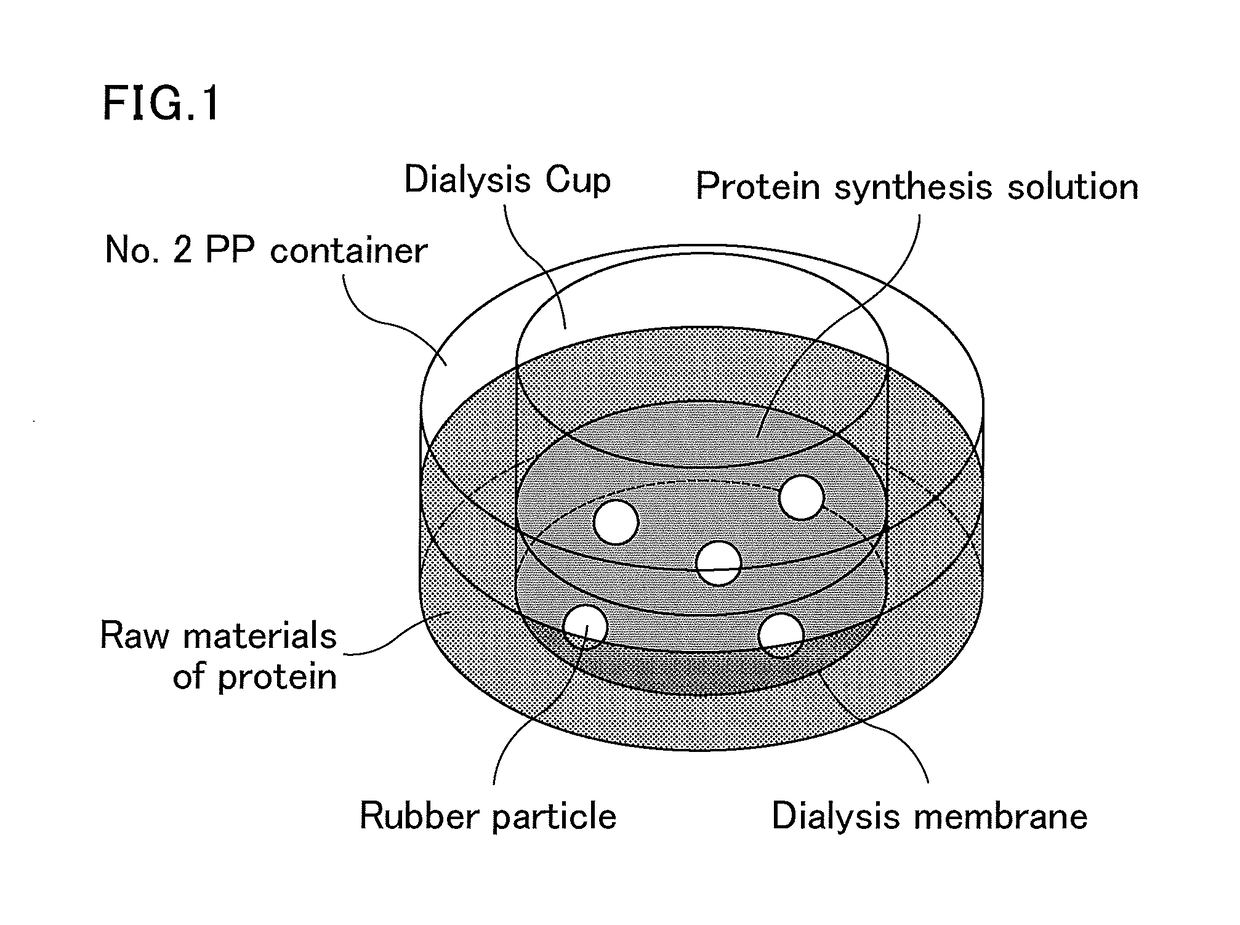Method for producing rubber particles with reduced coagulation tendency, method for producing pneumatic tire, and method for producing rubber product
a technology of coagulation tendency and production method, which is applied in the direction of plant peptides, chemistry apparatus and processes, peptide sources, etc., can solve the problems of reducing the ability to synthesize rubber, and the inability to efficiently synthesize rubber at low temperatures, so as to and reduce the tendency of coagulation
- Summary
- Abstract
- Description
- Claims
- Application Information
AI Technical Summary
Benefits of technology
Problems solved by technology
Method used
Image
Examples
example 1
Extraction of Total RNA from Hevea Latex
[0141]Total RNA was extracted from the latex of Hevea brasiliensis by the hot phenol method. To 6 mL of the latex were added 6 mL of 100 mM sodium acetate buffer and 1 mL of a 10% SDS solution, and then 12 mL of water-saturated phenol pre-heated at 65° C. The mixture was incubated for 5 minutes at 65° C., agitated in a vortex, and centrifuged at 7000 rpm for 10 minutes at room temperature. After the centrifugation, the supernatant was transferred to a new tube, 12 mL of a phenol:chloroform (1:1) solution was added, and the mixture was agitated by shaking for 2 minutes. After the agitation, the resulting mixture was centrifuged again at 7000 rpm for 10 minutes at room temperature, the supernatant was transferred to a new tube, 12 mL of a chloroform:isoamyl alcohol (24:1) solution was added, and the mixture was agitated by shaking for 2 minutes. After the agitation, the resulting mixture was centrifuged again at 7000 rpm for 10 minutes at room t...
example 2
Extraction of Total RNA from Hevea Latex
[0187]The extraction was carried out as in Example 1.
[Synthesis of cDNA from Total RNA]
[0188]The synthesis was carried out as in Example 1.
[Acquisition of SRPP Gene from cDNA]
[0189]SRPP gene was obtained using the prepared 1st strand cDNA as a template. PCR was performed using a KOD-plus-Neo (Toyobo Co., Ltd.) in accordance with the manual. The PCR reaction involved 35 cycles with each cycle consisting of 10 seconds at 98° C., 30 seconds at 58° C., and 1 minute at 68° C.
[0190]The SRPP gene was obtained using the following primers:
[0191]
Primer 5:5′-tttctcgagatggctgaagaggtggag-3′,Primer 6:5′-tttggatccttatgatgcctcatctcc-3′.
[0192]SRPP gene was obtained as above. The gene was sequenced to identify the full-length nucleotide sequence and amino acid sequence. The nucleotide sequence of SRPP is given by SEQ ID NO: 11. The amino acid sequence of SRPP is given by SEQ ID NO: 12.
[Vector Construction]
[0193]The obtained DNA fragment was subjected to dA addi...
PUM
| Property | Measurement | Unit |
|---|---|---|
| concentration | aaaaa | aaaaa |
| temperature | aaaaa | aaaaa |
| temperature | aaaaa | aaaaa |
Abstract
Description
Claims
Application Information
 Login to View More
Login to View More - R&D
- Intellectual Property
- Life Sciences
- Materials
- Tech Scout
- Unparalleled Data Quality
- Higher Quality Content
- 60% Fewer Hallucinations
Browse by: Latest US Patents, China's latest patents, Technical Efficacy Thesaurus, Application Domain, Technology Topic, Popular Technical Reports.
© 2025 PatSnap. All rights reserved.Legal|Privacy policy|Modern Slavery Act Transparency Statement|Sitemap|About US| Contact US: help@patsnap.com

